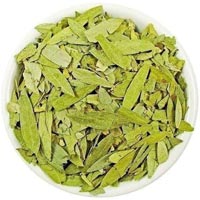The primary object of HIJAMA (cupping) is to move Blood and Qi, remove Cold pathogens as well as Heat pathogens and eliminate Stagnation of any kind from the body (and not to ‘remove the evil spirit’ as was claimed by one untrained therapist, leading to a police investigation in England in July 2005). To achieve this, different cupping techniques can be employed (there are 11 different cupping methods). Almost without exception, in every case where cupping is performed for the first time there will be slight reddening or a ring mark caused by the edge of the cup at the site of the treatment. The extent of the cupping mark depends very much on the length of treatment time and the strength of the suction achieved. To reduce the risk of severe marking, always start with Empty, Light or Medium strength suction, increasing the strength and duration on subsequent visits. The patient should experience a warm, pulling or stretching sensation on the skin, but not pain. If the patient complains of pain at any time during treatment, remove the cups immediately. The skin of some patients is very sensitive and their pain threshold extremely low, especially children under 16 years old, the elderly, North Americans, Scandinavians, northern Europeans and UK patients.
Normally the ring or cupping mark will fade away within 10 days. In some cases a blister may appear on the skin inside the cup. This is an indication of both excessive duration and strength of suction. When this happens, remove the cup without delay and pierce the blister with a sharp sterilized instrument, such as an acupuncture needle, to release the fluid. Do not reapply cups at the site of the blister until it has completely healed. Elderly and very young patients are particularly susceptible to severe marking and blistering. This is another reason for monitoring the patient during treatment. If the blister is not noticed at an early stage, it may result in an unnecessary large, open wound. During the holiday season cupping treatment should be terminated a week before the patient goes away (unless the patient does not mind showing off the marks) or they may draw attention from onlookers at the beach or the pool. The cupping marks usually appear worst of all after the first application, because of stagnation of Blood and Qi; follow-up treatments to the same point will result in much less marking, as the circulation improves and the stagnation is removed. The fine capillaries under the skin fill and empty freely, and as a result of improved metabolism following treatment a sense of warmth and well-being invades the patient’s body, sometimes accompanied by a feeling of light-headedness and a slight thirst.
When the cupping session is over there is a short period of tenderness at the points where the cups have been applied. Using massage oil, the area can be massaged gently and, time permitting, the patient can be covered with a blanket for a few minutes’ rest before leaving the clinic. Blood pressure may vary a few points owing to the unfamiliar suction and its effects on the circulation. As patients with low blood pressure are particularly susceptible to these fluctuations, care must be taken not to send patients away too soon following treatment. Patients coming for cupping therapy should also be advised to eat a light meal at least 4 hours before the treatment commences. Do not administer cupping therapy when the stomach is full or when it is completely empty, and particularly when the patient is fasting. In both situations the energy is either ‘stagnant’ or ’empty’, in which case it may contribute to the patient feeling unwell.
During the cupping days or weeks ask the patient to refrain from eating rich and greasy foods. Light, warm meals in winter and salads in the summer are preferred. The fluid intake should also be increased at least 20% during this period which will help with the metabolism and the detoxification process. A warm feeling throughout the body, some perspiration and a sense of relaxation normally follows the treatment due to improved circulation and muscle relaxation. Should the patient feel cold, shivery or extremely tired after the treatment, a warm drink and up to 30 minutes of rest are highly recommended before the patient leaves the clinic. Like many other therapies, cupping therapy isn’t a ‘magic cure’ for all ailments. The full benefits of this therapy are usually achieved after between 5 and 10 visits. Sometimes the benefits are noticed immediately but short lived, in particular when dealing with emotional complaints or long-standing musculoskeletal problems. Ten sessions are considered as one course of treatment. Patients under 16 years of age normally require less treatment.


